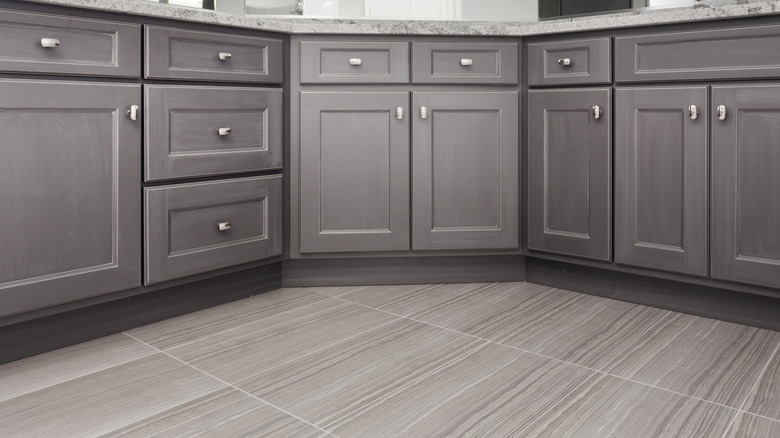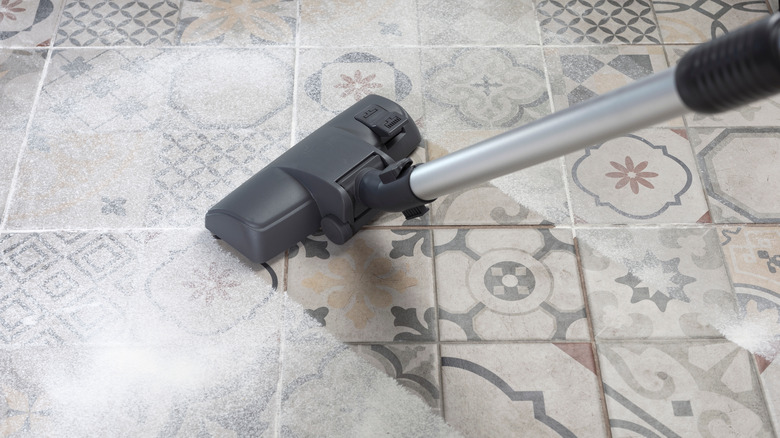Tips To Keep Your Porcelain Tile Floors Safe In The Kitchen
Raise your hand if cleaning porcelain tile and keeping it safe has been the bane of your existence. Porcelain tile is known for its durability in all spaces with high traffic, as well as its versatility and stylishness. Even though it typically comes at a high price point, it's usually worth it. And it's easier to clean than wood alternatives. But what about keeping your flooring safe? With a higher investment, wanting to put in a bit of extra care for longevity is only right. It's made from extremely refined clay that's heated at a temperature to keep it in steady shape, but can be sensitive when it comes to water damage. It's also extremely difficult to fix if irreparable damage appears. Those added costs may have you looking for ways to keep your porcelain in tip-top shape, so you've come to the right place.
A major factor that many don't consider is ammonia. Products that contain this substance are common in household cleaning products and can cause long-term damage. Ammonia, like vinegar and lemon, contains chemicals that naturally discolor surfaces over time. They can also deglaze and grout porcelain. With that said, if ammonia is still your cleaner of choice, opt for sudsy ammonia. The difference between the two is all about detergent. Be sure that your tile has been installed for at least a week before cleaning with a mixture of one cup of sudsy ammonia and one gallon of water to clean your porcelain floor. Be sure to dry after.
Other ways to keep your porcelain flooring in good shape
Beyond ammonia, there are many other ways to keep your porcelain floor shiny and clean without long-term damage. Regardless of whether you have glazed or unglazed, textured or anti-slip, the next best option is a dry mop or vacuum cleaner. Besides everyday spills, dust can be a major factor in making your flooring look unkept. Grab a microfiber mop and really get into the corners and crevices, as this is transformative for a deep clean. Simply following up by mopping with a non-harsh solution and buffing with a piece of cheesecloth will keep your floor looking good.
Another option is a sealant. Though there's no special need for extra coatings, this is a great alternative if you want to keep your porcelain safe for a long time. A polyurethane topical sealer is the best option, as acrylic-based sealers don't create the same long-lasting bond that makes the floor surface smooth. If you want something that will provide a non-yellowing look, GlazeGuard is a great option. Available in a high-gloss wet look, satin, and matte finish, you can customize your porcelain flooring based on your particular aesthetic.
Start by sweeping or vacuuming your surface thoroughly, then apply a generous coating of your preferred glaze with a sponge or sprayer. After 10 minutes, wipe off excess glaze with a cotton towel or rags, then allow it to dry for at least 4 hours. Reduce traffic as much as you can during the drying period.

